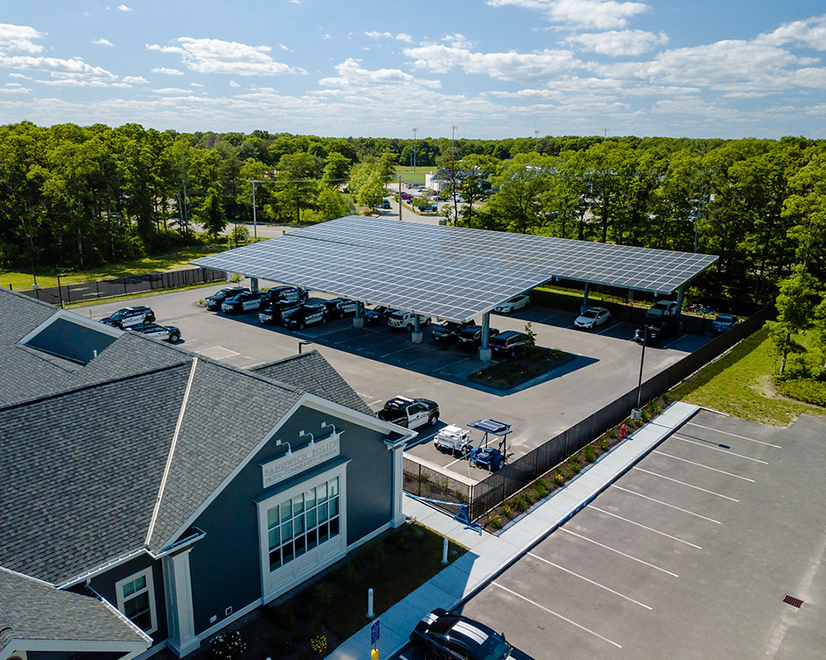
The driving force behind much of the renewable energy growth on Cape Cod and the surrounding area is the Cape and Vineyard Electric Cooperative (CVEC), according to a new report from the nonprofit Environment Massachusetts.
The nonprofit cooperative saved its 25 municipal members roughly $16.9 million in energy costs by June 2020 by developing large-scale power generation and storage facilities, primarily through solar and battery storage.
“We implement the clean energy goals of our member and participant communities,” allowing the cooperative to “bundle projects,” said Maria Marasco, executive director of CVEC, at a webinar hosted by Environment Massachusetts on Tuesday.
Instead of each municipality navigating how to incorporate solar power on its own, the cooperative brings solar project expertise and a regional perspective to its members’ projects.
“We share legal fees, we share request for proposal costs, we share administrative costs and we share the collective experience of what to do,” Marasco said.
Environment Massachusetts highlighted CVEC in its report as an example that could “inspire bolder action at the statehouse,” Ben Hellerstein, the nonprofit’s executive director, said during the webinar.
The cooperative has built 28 MW of solar and battery capacity, and new projects currently under development will bring the total to 54.8 MW, including solar canopies over parking lots, roof-mounted panels on public buildings and ground-mounted arrays. Another 4.4 MW are going out to bid this month.
A rooftop solar installation at Monomoy High School in Harwich, Mass., has already generated 187 MWh of electricity as of Aug. 12.
CVEC also received a $1.4 million grant from the state’s Community Clean Energy Resiliency Initiative to install a 250-kW battery at Dennis-Yarmouth Regional High School in Yarmouth, Mass., which is the region’s emergency shelter.
“Not only do we develop those projects on behalf of the communities, but we also purchase renewable energy and allocate that to towns seeking additional net-metering credits,” Marasco said.
How It Works
Founded in 2007, CVEC received state authority to enter into agreements with towns, school districts and other government entities to develop facilities “without burdening municipal debt capacity, as developers pay project capital costs,” according to the report released Tuesday.
The host of a project purchases power from the cooperative through an intergovernmental agreement. CVEC charges a “small administrative adder that could range anywhere from a penny to three quarters of a penny,” Marasco said.
The host also enters into a lease with the developer, but CVEC relieves the member municipality from the project management and administrative costs.
“So they get the benefits of the reduced energy costs and get CVEC’s expertise in order to make sure those projects work for the benefit of the community,” Marasco said.

